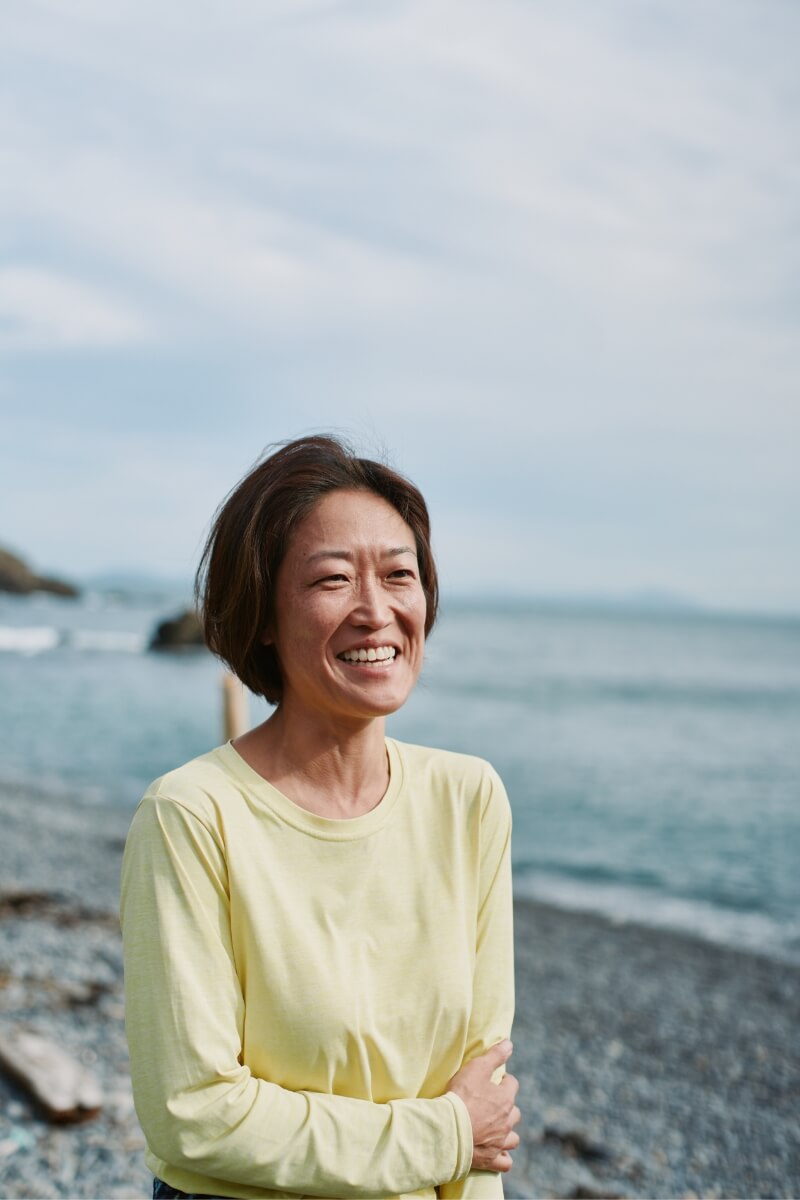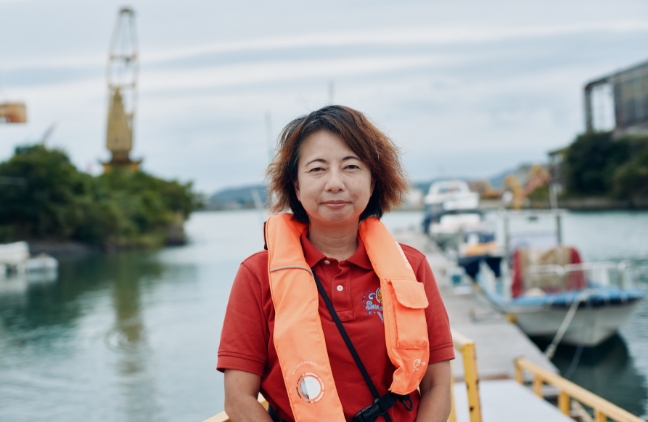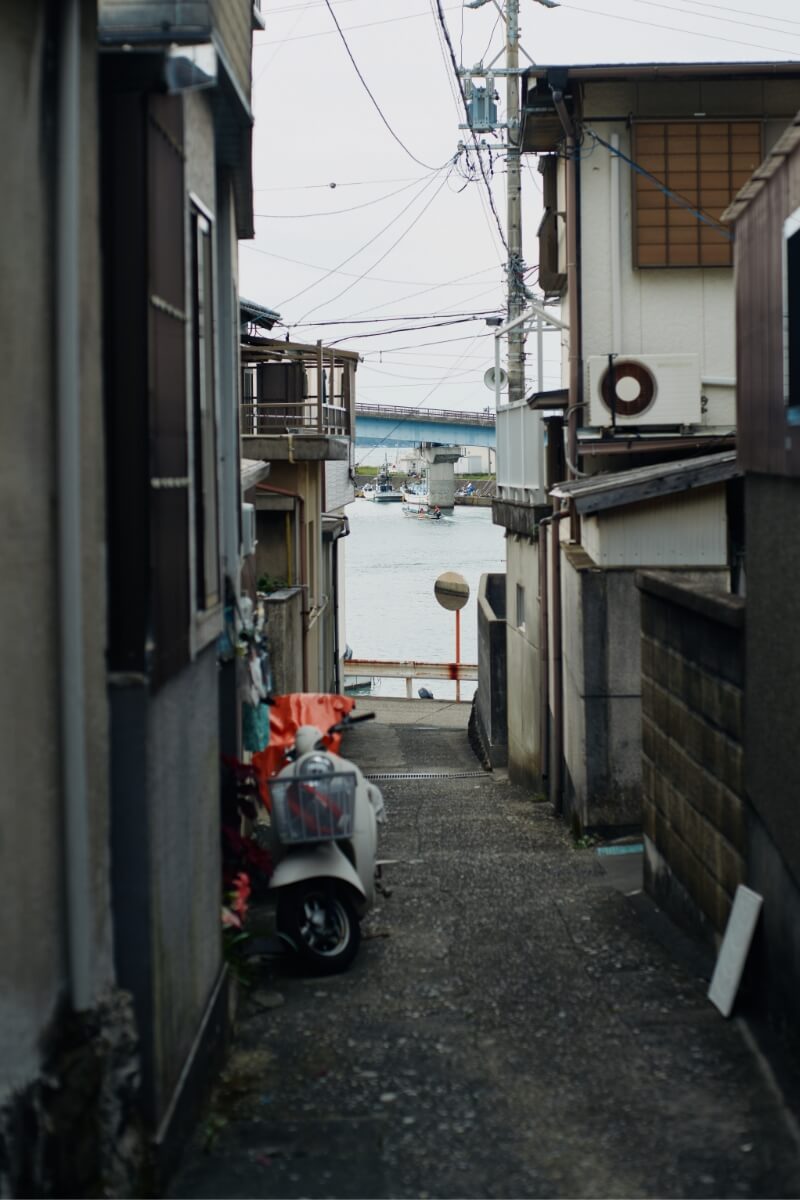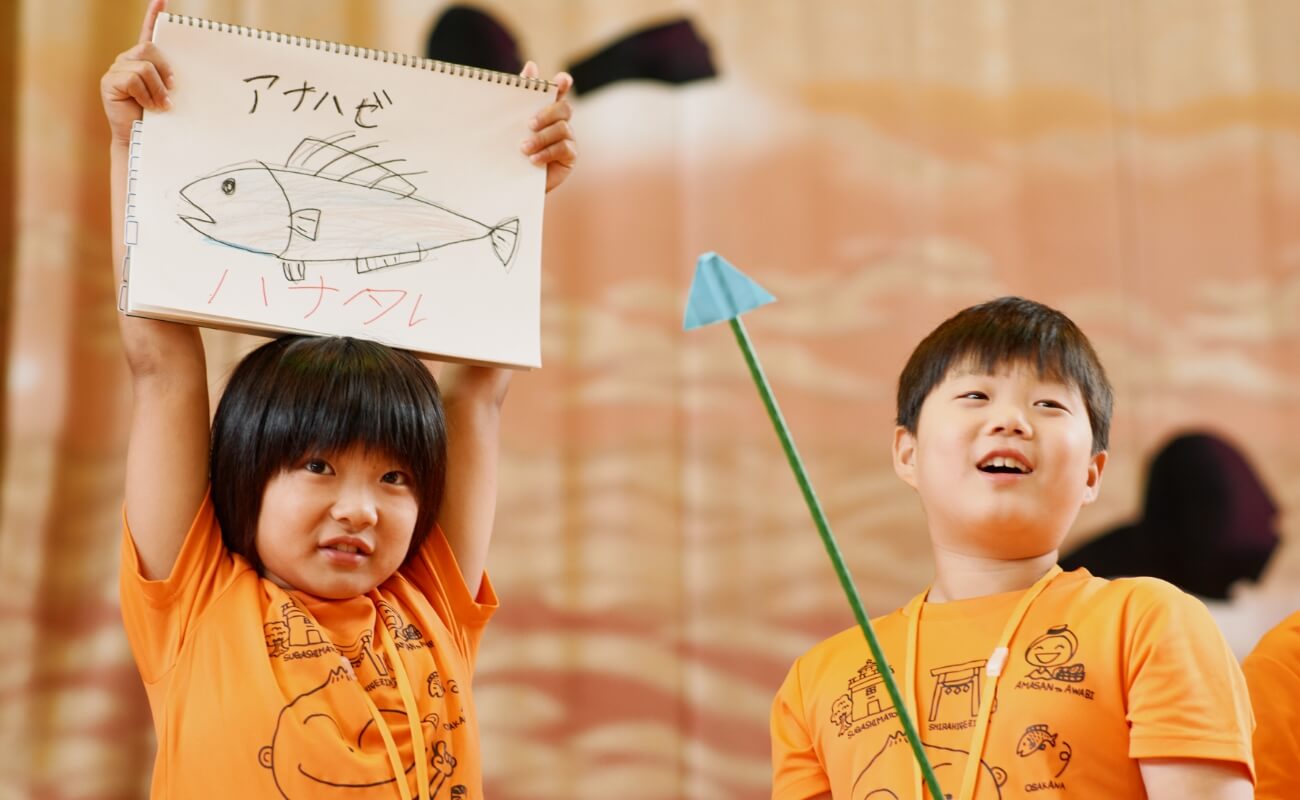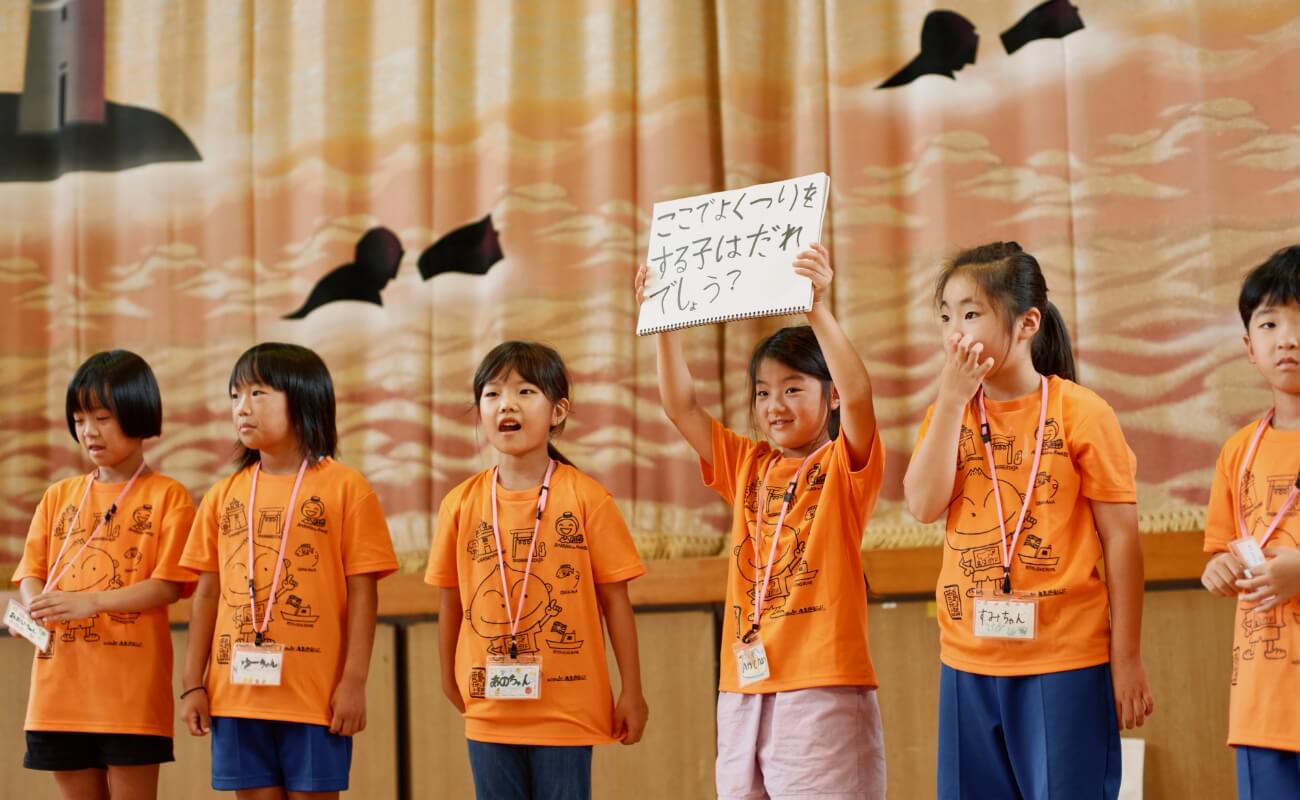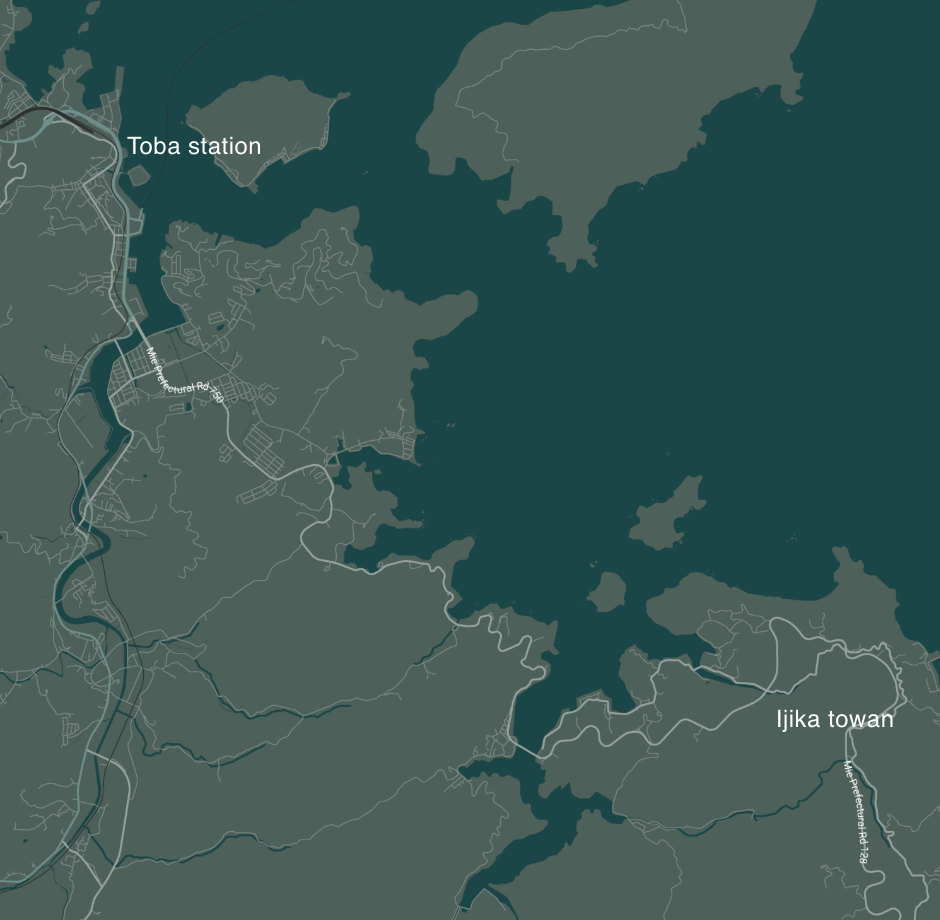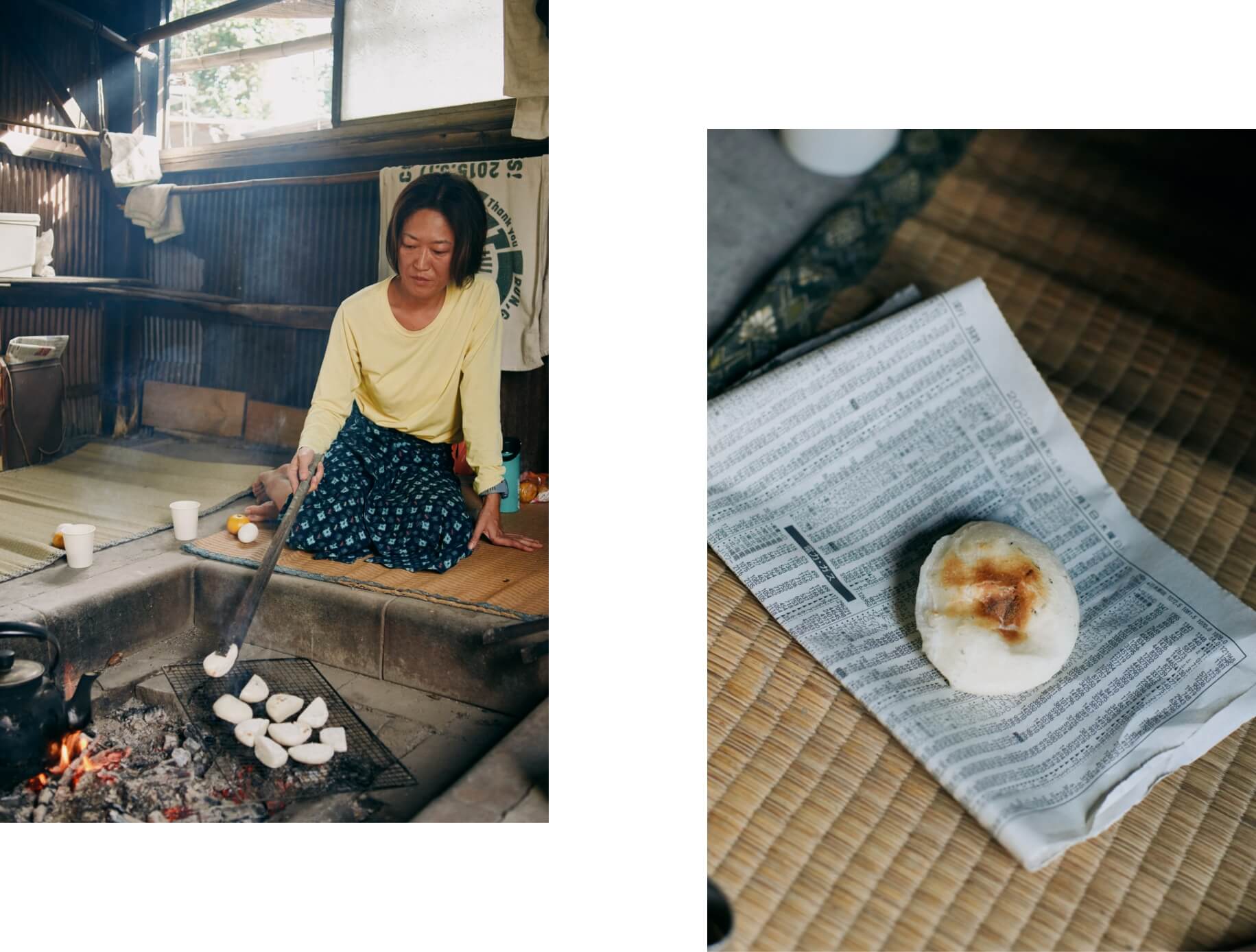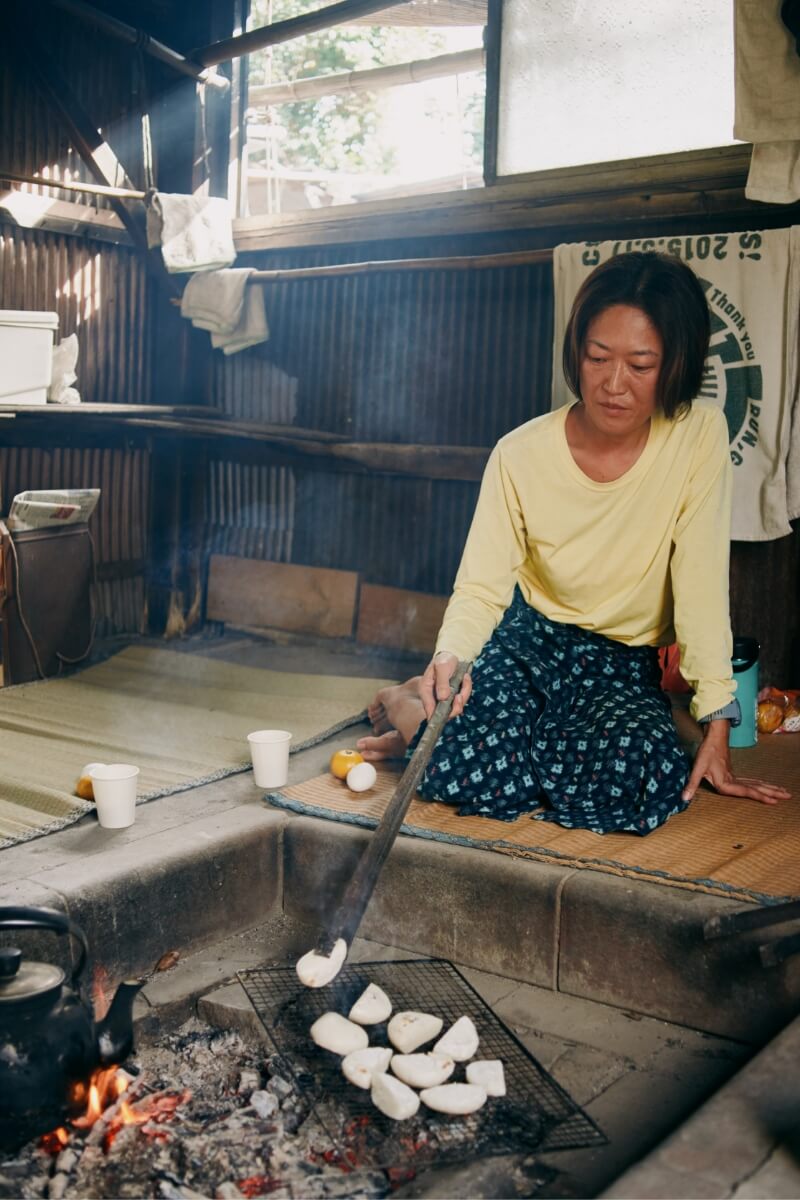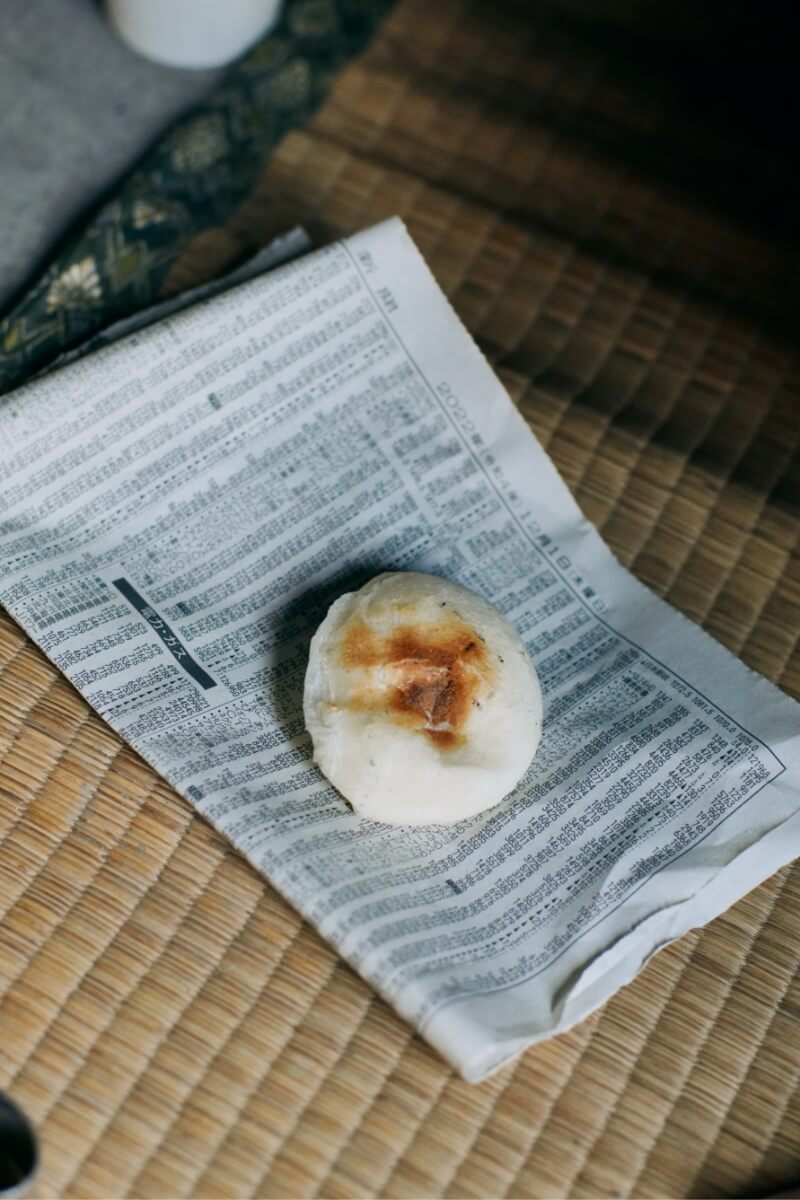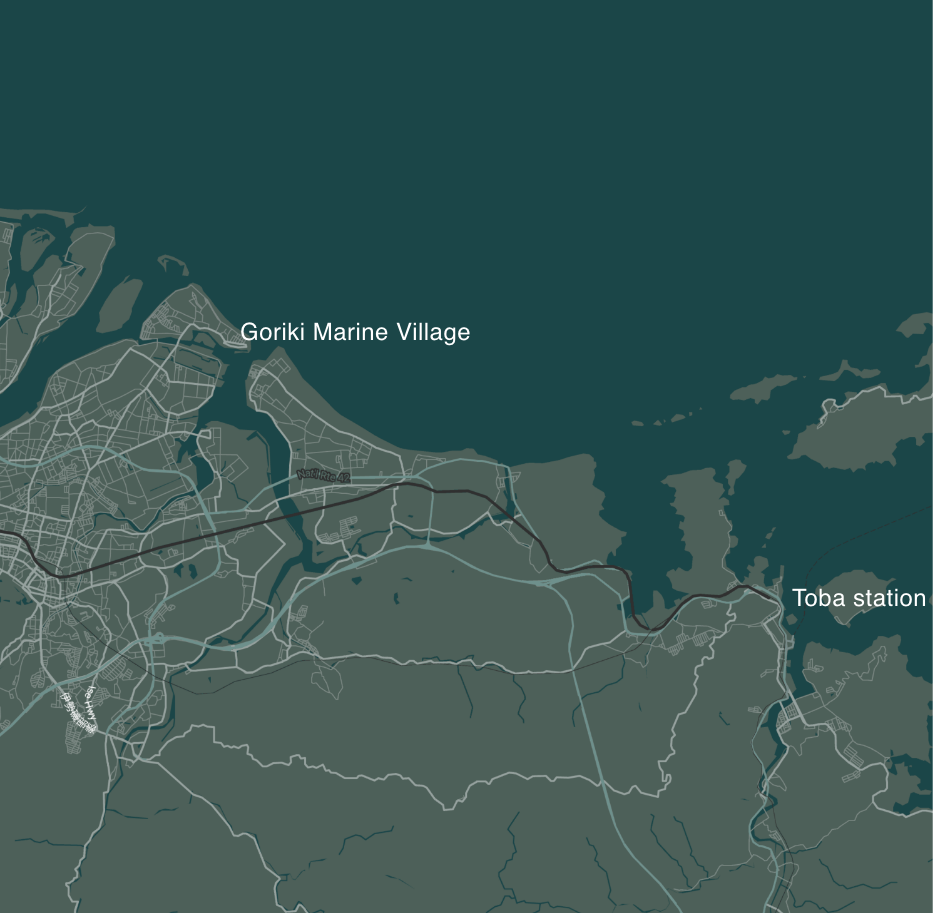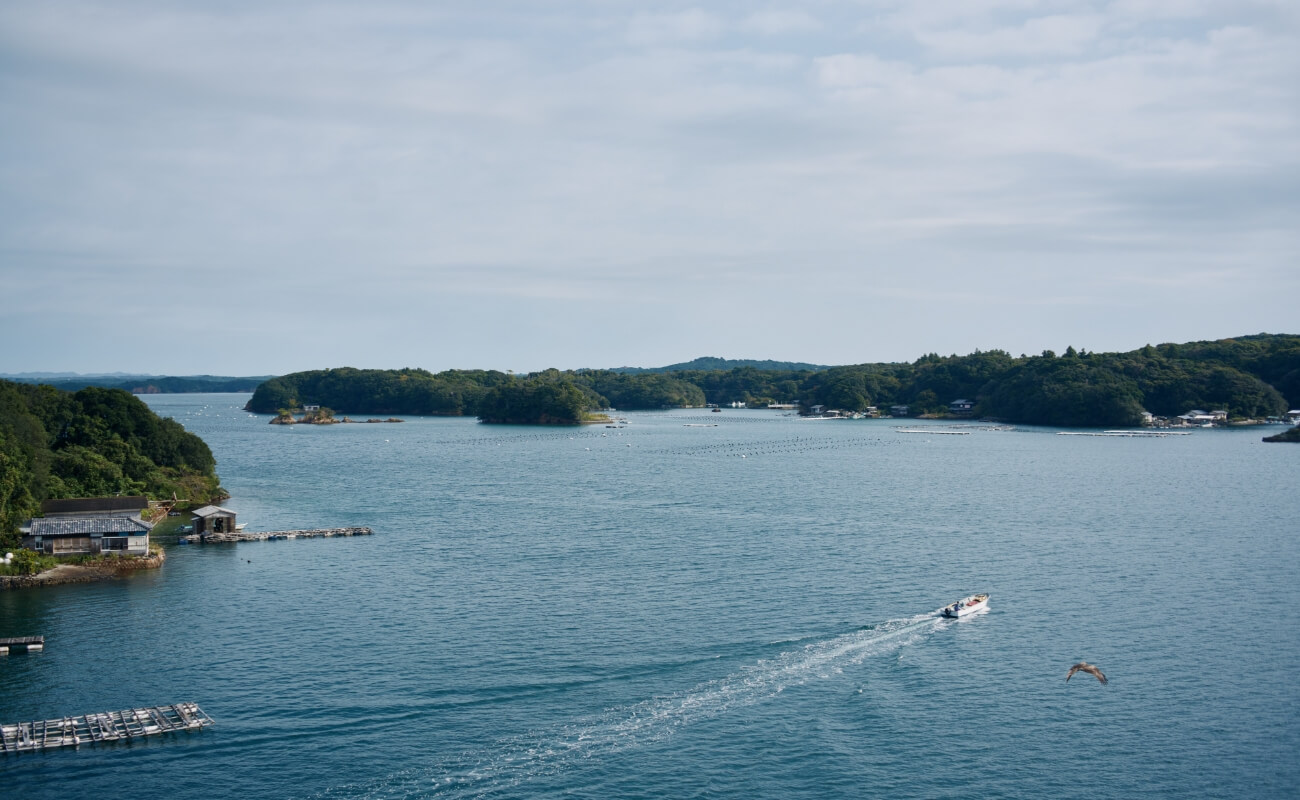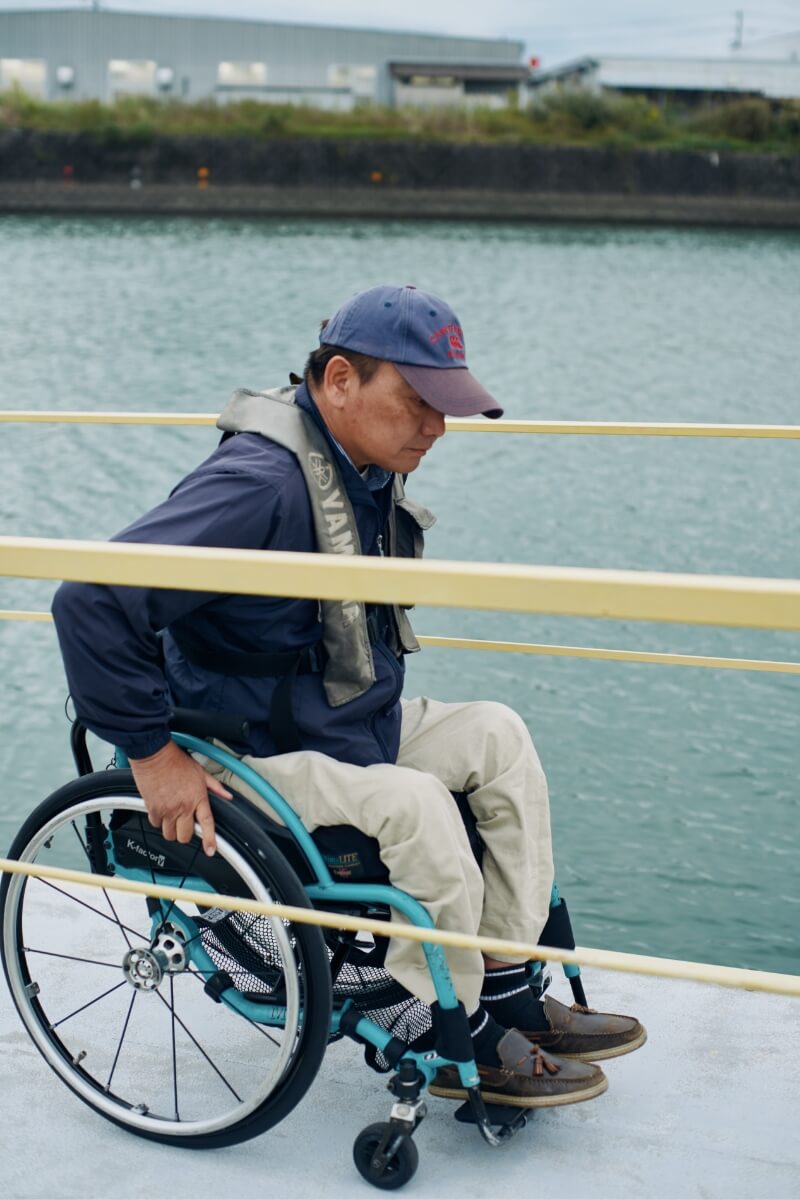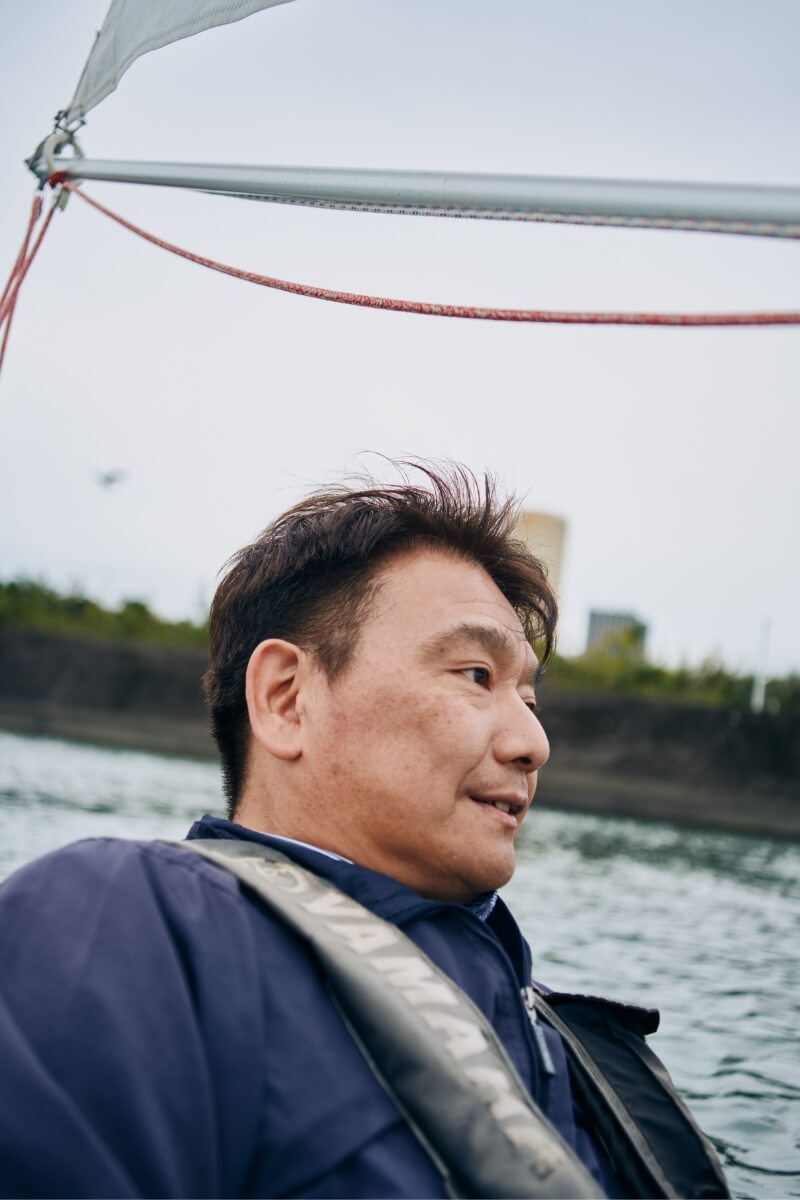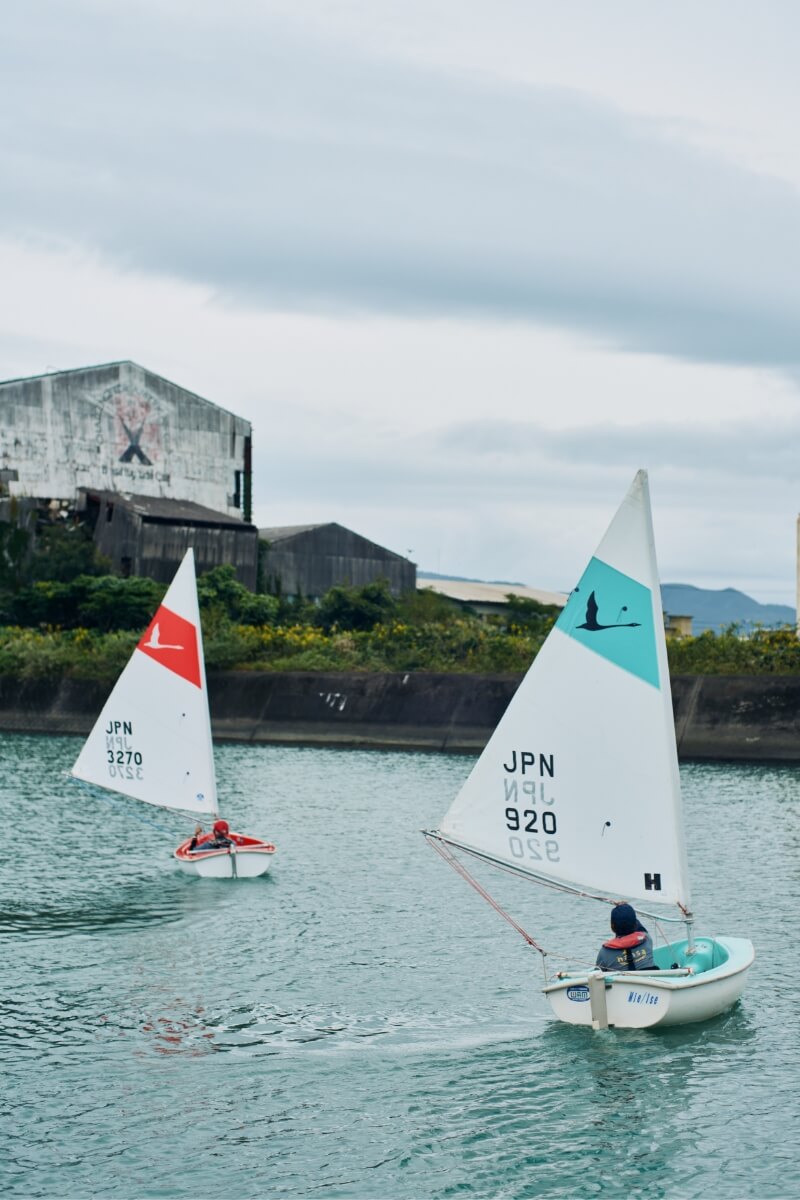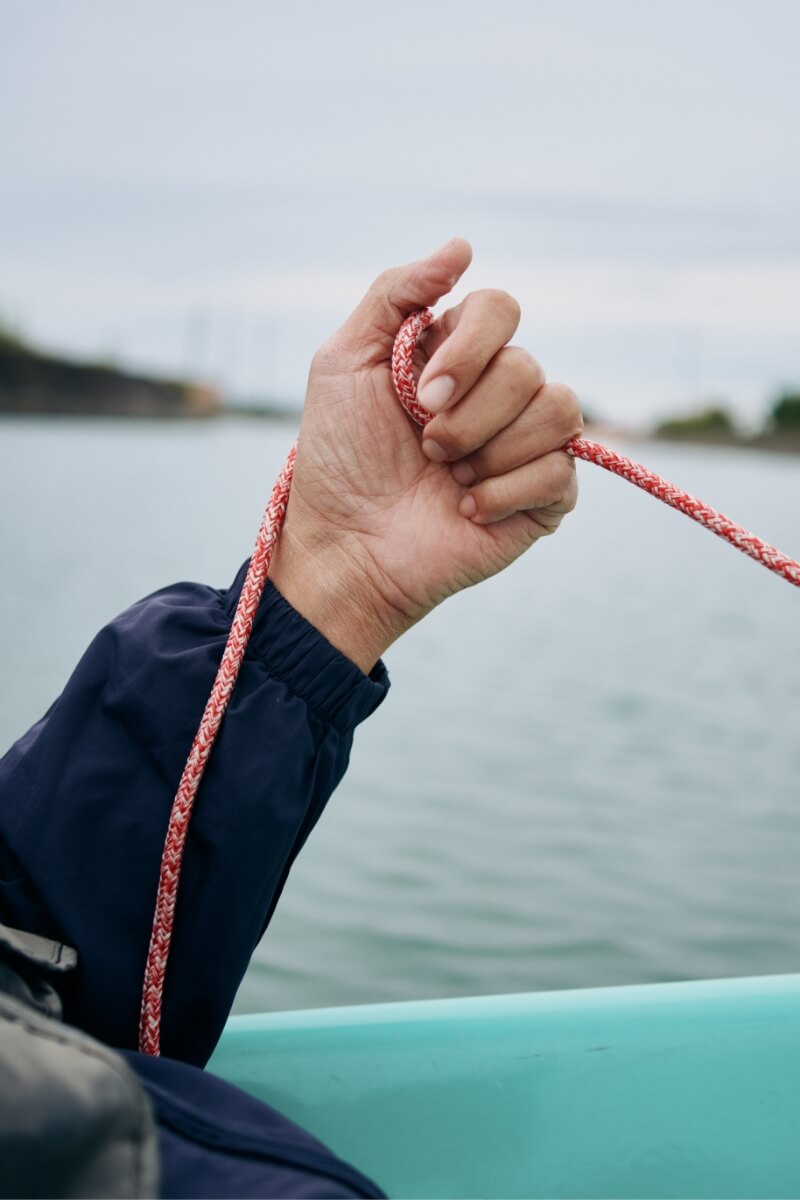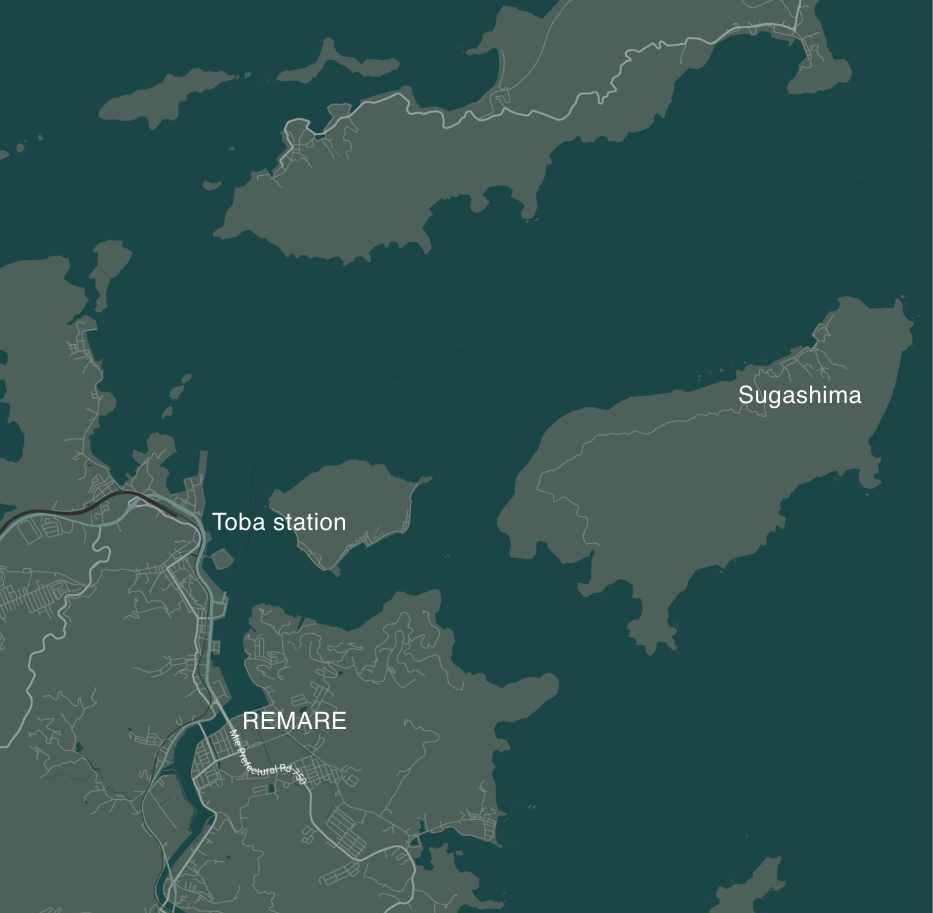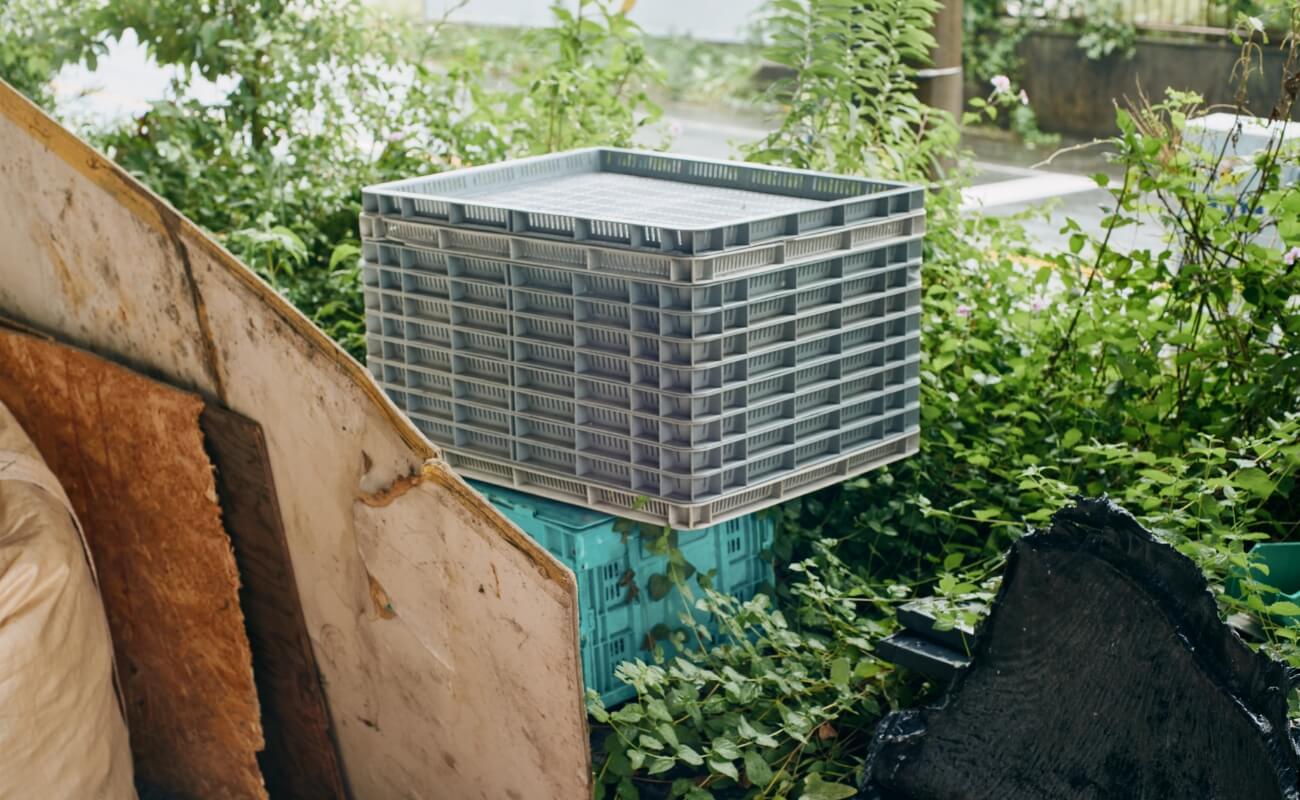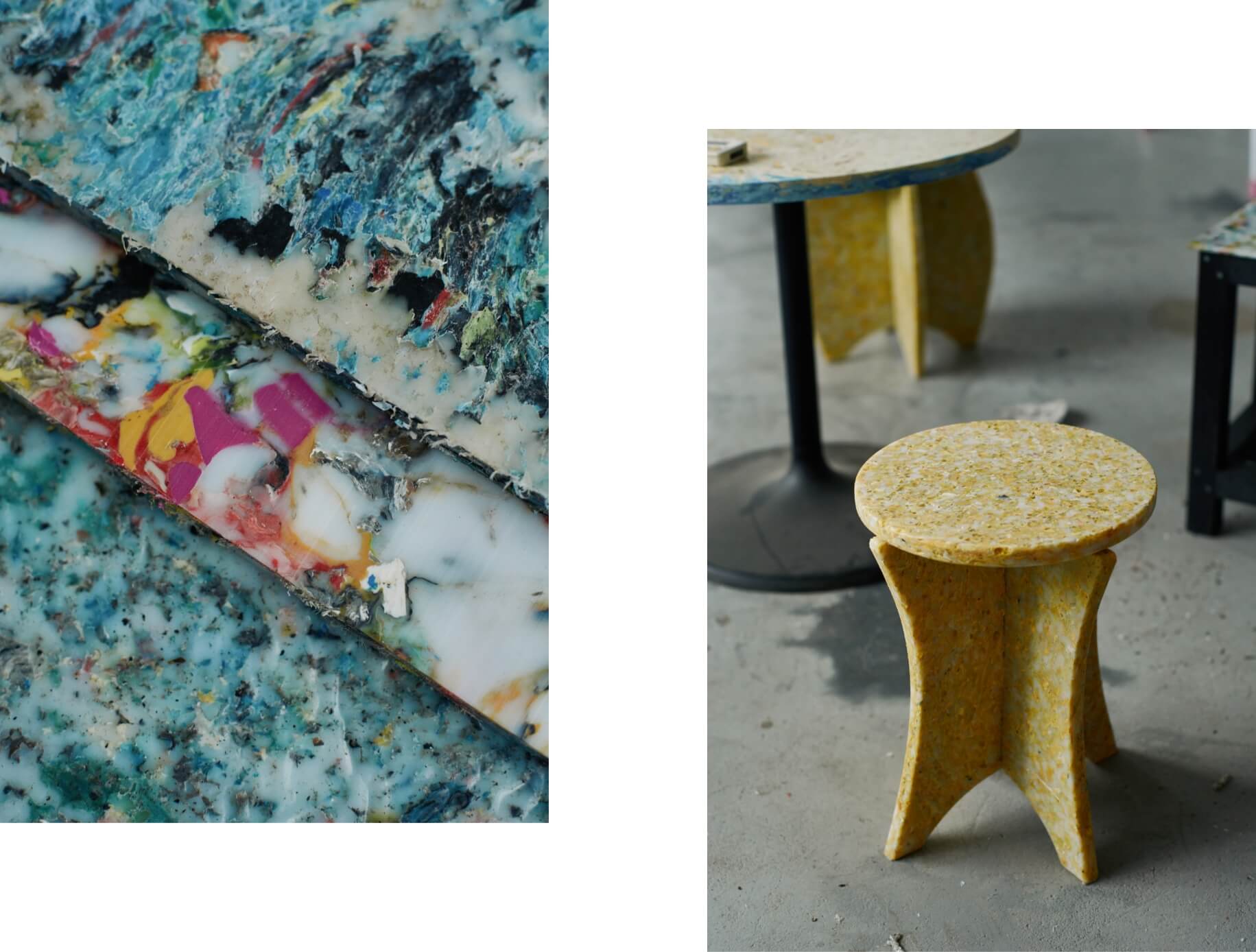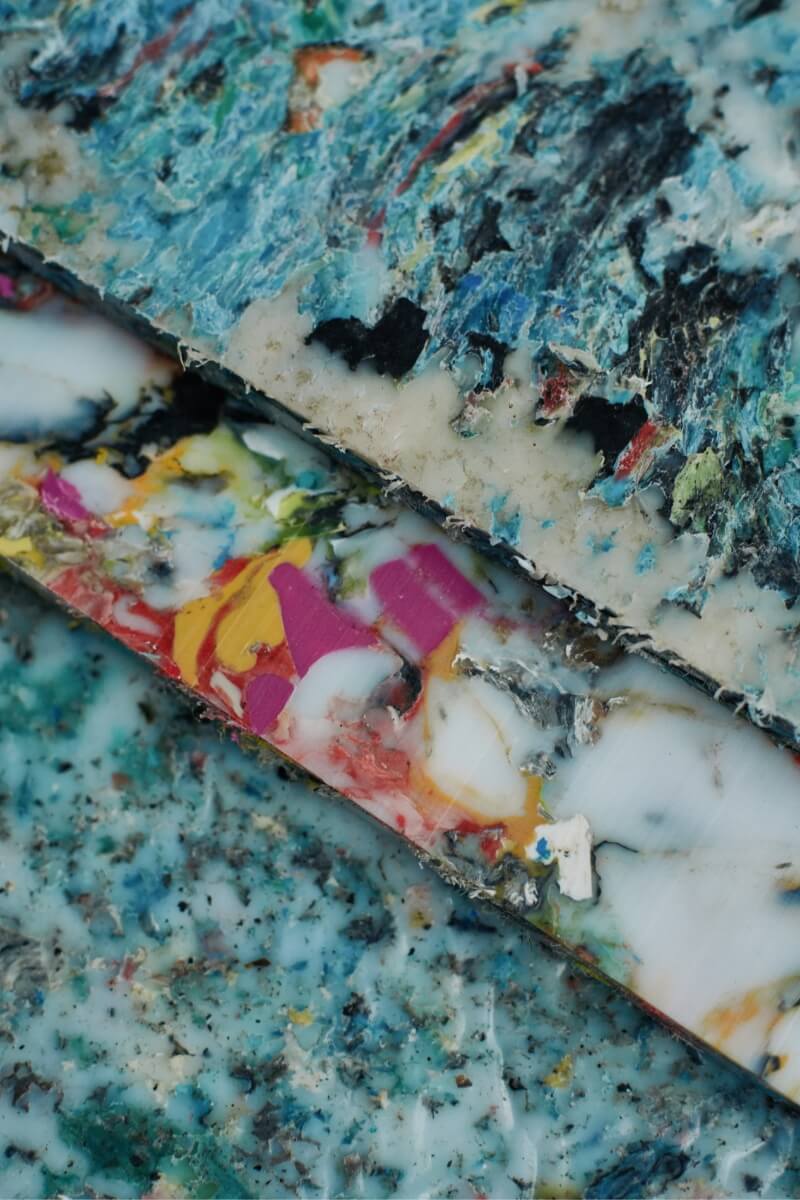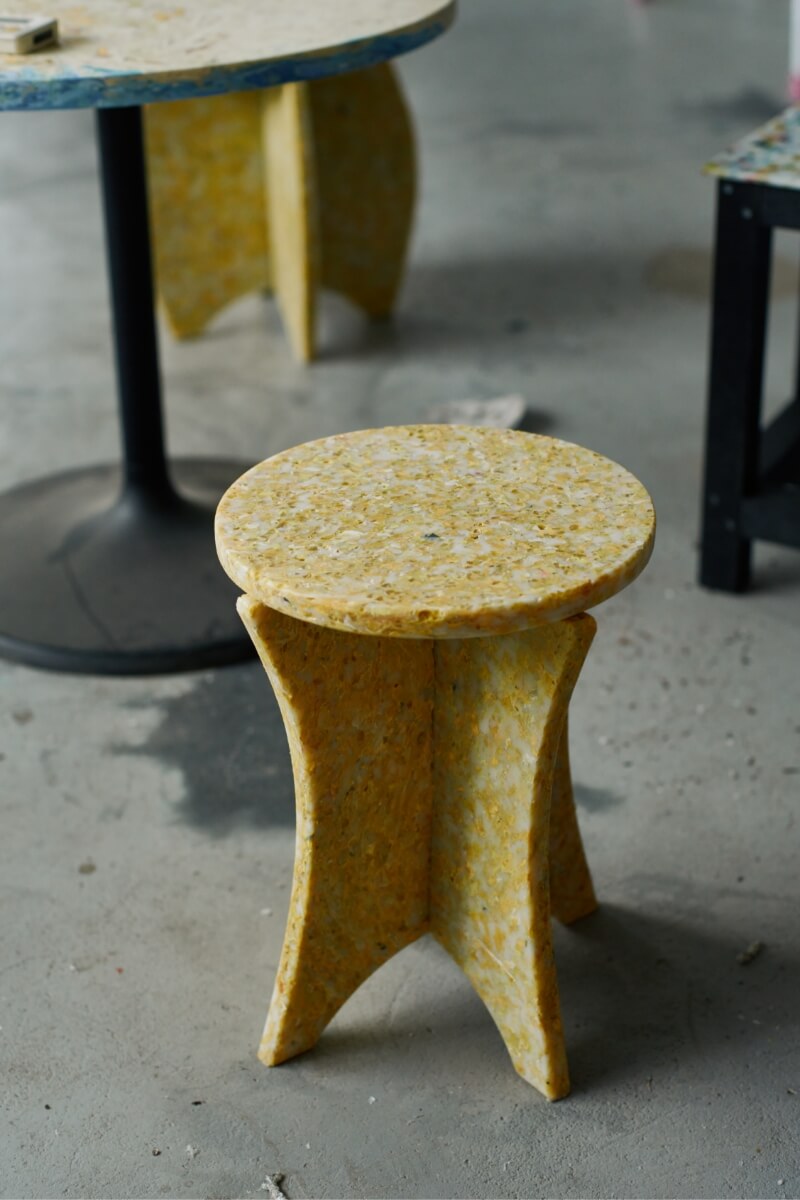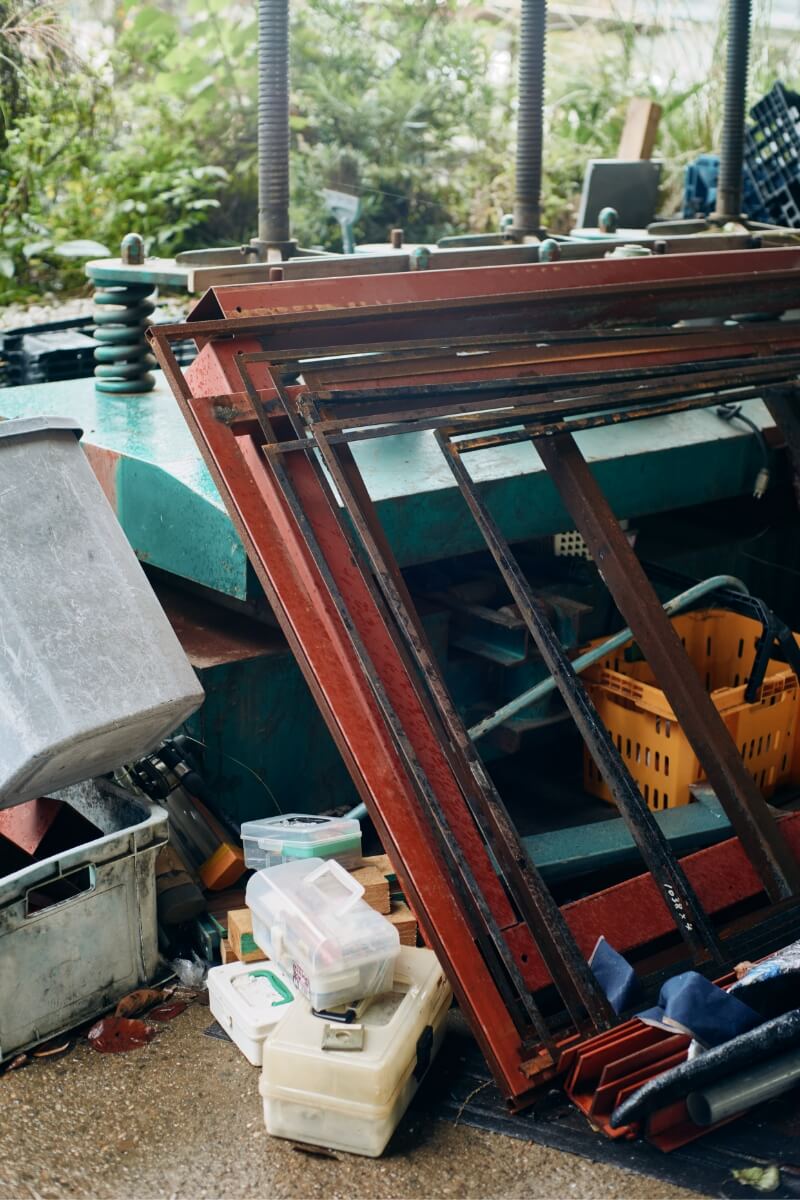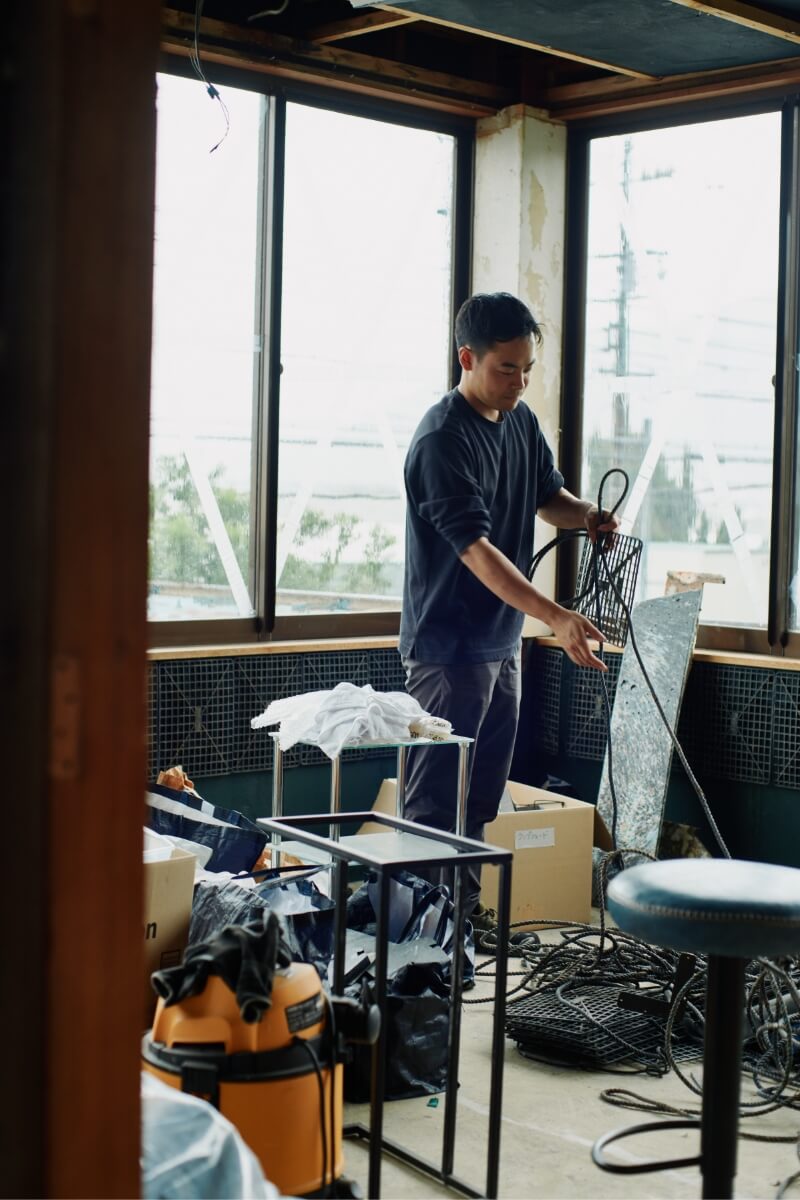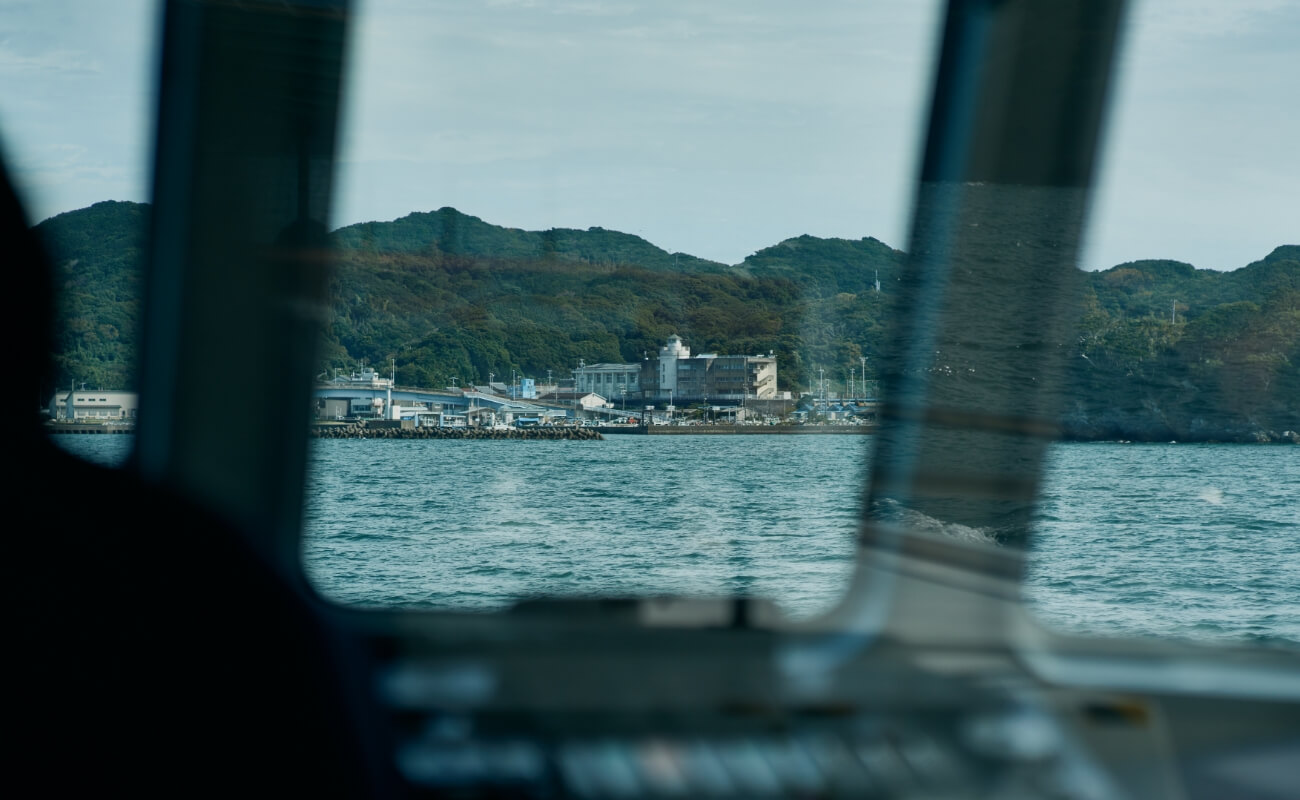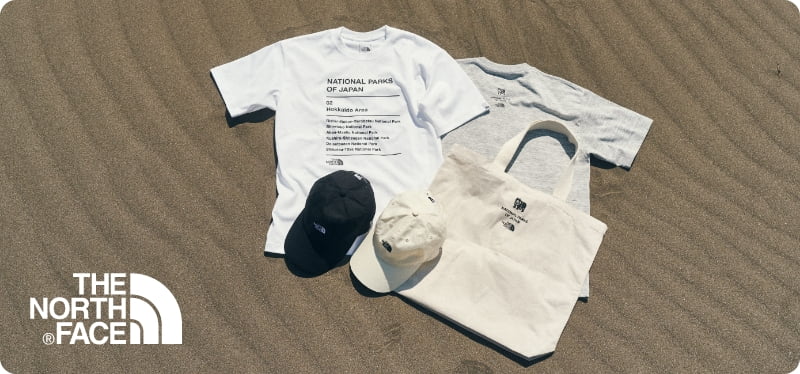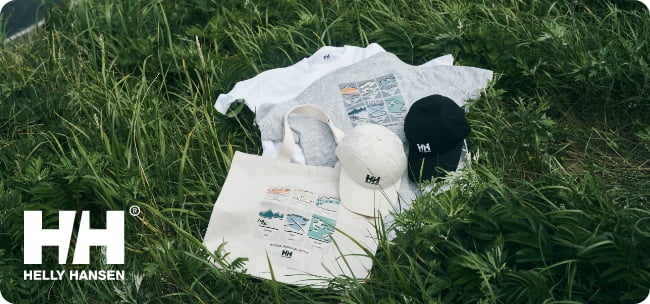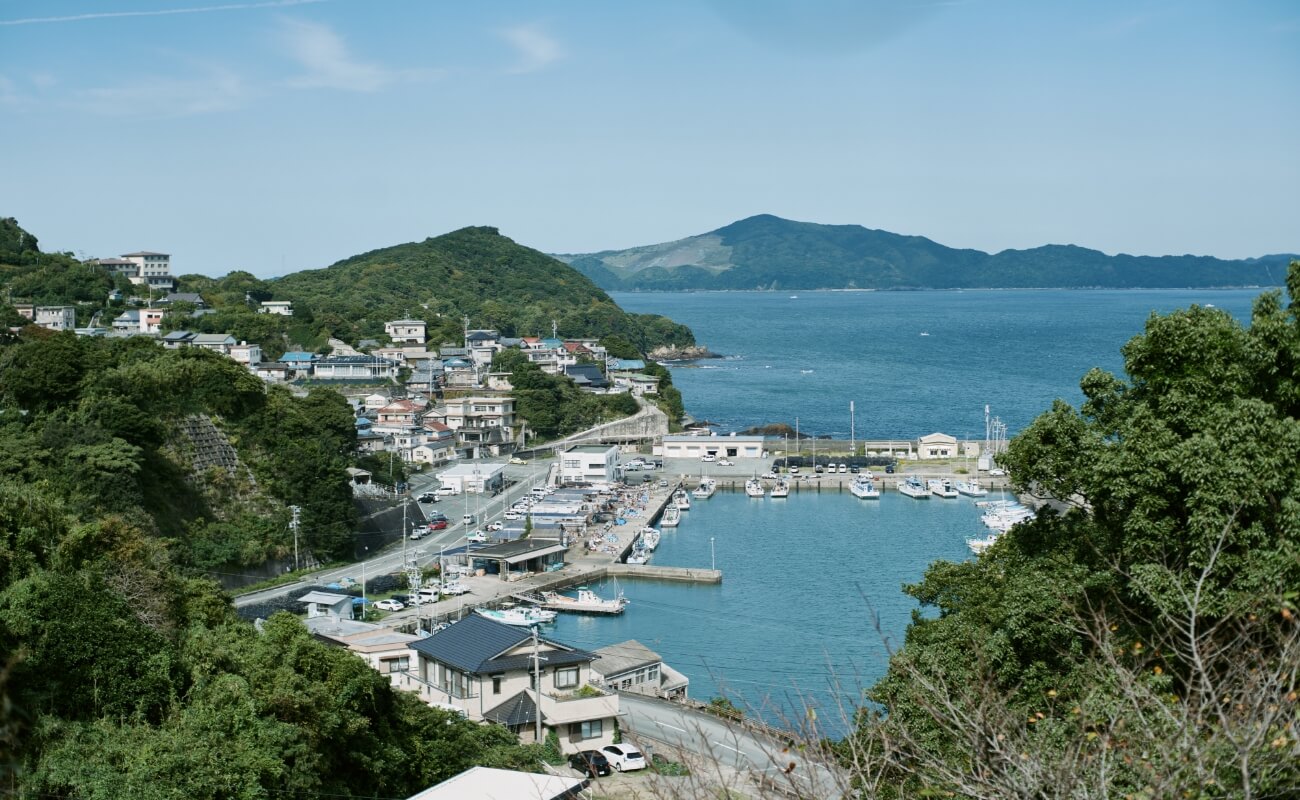
It's impossible to speak of Ise-Shima National Park without mentioning its ama culture—the women divers whose traditions date back centuries. Although we couldn't see them at work this particular day, as the planned fishing was unexpectedly canceled, we were invited instead to visit an ama hut in Ijika, where everyone had gathered.
Stepping inside felt like walking into a lively club room at snack time, full of chatter and laughter. In the hut's center stood a kamado, a traditional hearth where crackling firewood blazed. Here, the ama prepares for dives and warm themselves—an essential role passed down through generations. A bit nervous, we lingered near the entrance until an ama veteran in her eighties greeted me with a warm smile. "Thanks for coming all this way," she said. "Here, have some mochi."
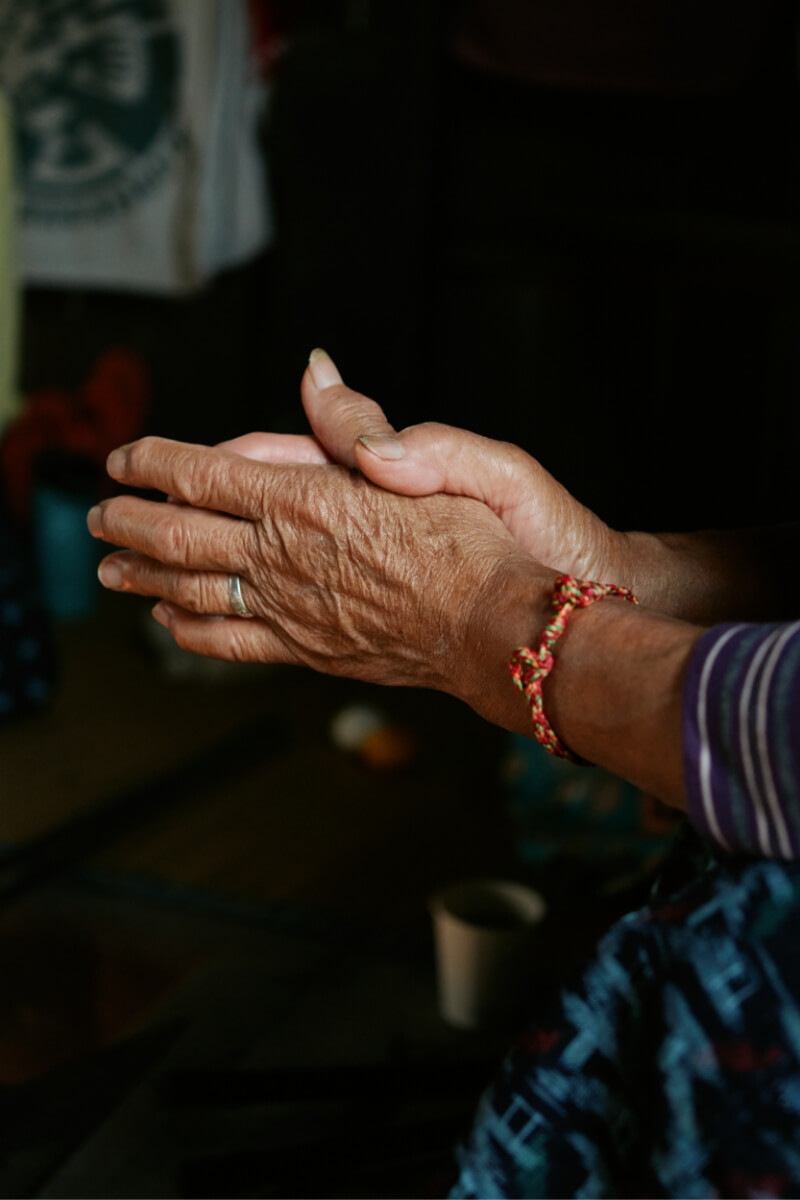
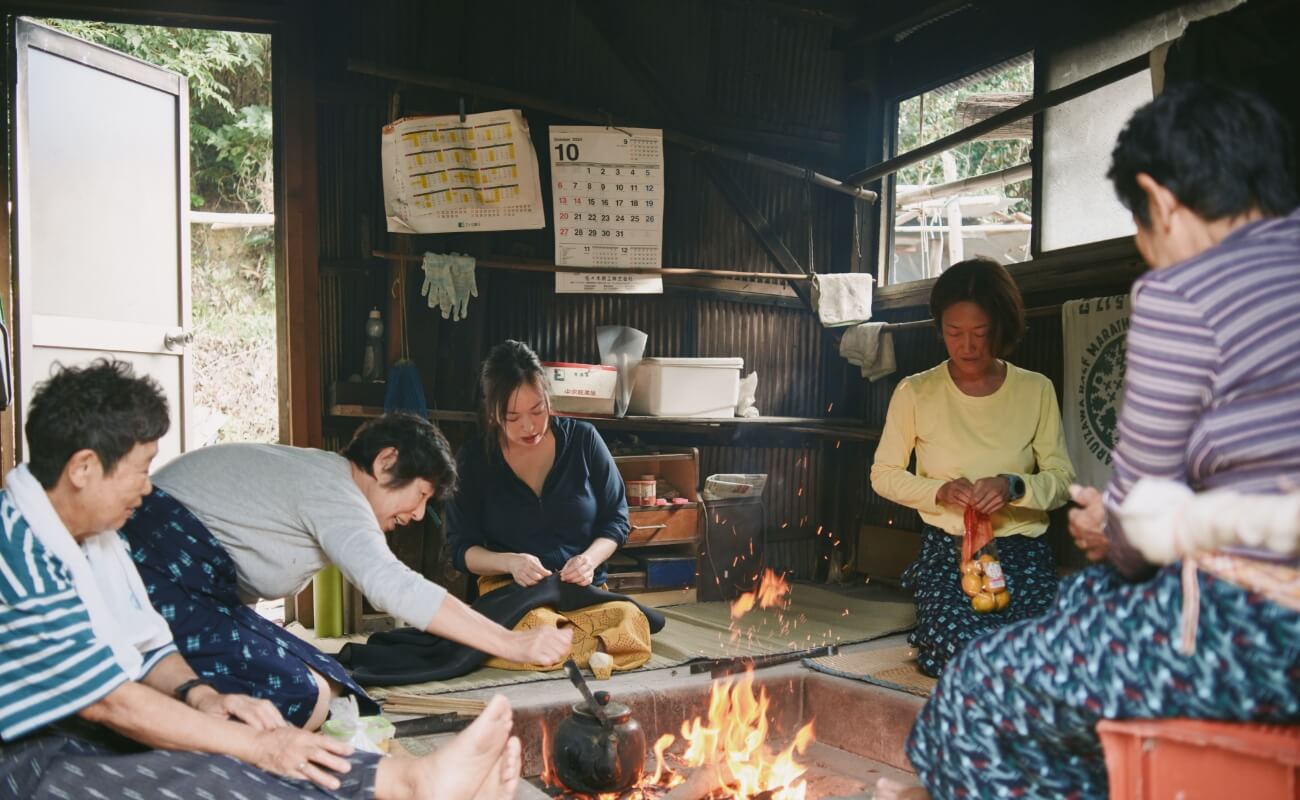
I've been an ama ever since I graduated junior high. I got a regular job when I got married, but after I retired, I came straight back," she explained.
"Why?" we asked. "Well, the ocean's right here," she said, as if it were the most obvious thing in the world.
"My whole body remembers the sea. It's just the easiest thing for me."
She's a living witness to these waters, her sparkling eyes reflecting decades spent diving off Ijika. Naturally, we asked if the ocean has changed over time.
"Oh, absolutely," she said. "The biggest difference is the decline in seaweed. Abalone love seaweed, so fewer seaweed beds mean fewer abalone."
"The tasty stuff is disappearing, and the kinds we don't want are rising."
"Hijiki seaweed is harder to find, too."
"Even so, Ijika is still better off than most places.
One voice stands out, with a Tokyo accent, among the local dialects swirling in the hut. Sitting toward the back was Ms. Aiko Ono, who moved here from the capital to become an ama.
"I used to dive recreationally and have explored many different seas," she said. "But the first time I dove here, I was astounded by how much seaweed there was—like an underwater forest. I'd never seen such a rich marine environment."

While local ama can sense that the sea's bounty is declining, they know it remains vibrant in many ways—largely thanks to ama culture. Whether it's abalone or turban shells, ama never harvests undersized creatures. For at least two millennia—long before official regulations existed—they've practiced this sustainable approach on their own, passing it down through generations. They also release juvenile shells back into the ocean. Their catch varies by season, from abalone, sea cucumbers, and turban shells to hijiki seaweed.
"If we over-harvest, we'll be the ones in trouble later," someone remarked.
Before people started talking about "sustainability," ama already lived by it. That might be why the tradition has endured so long.
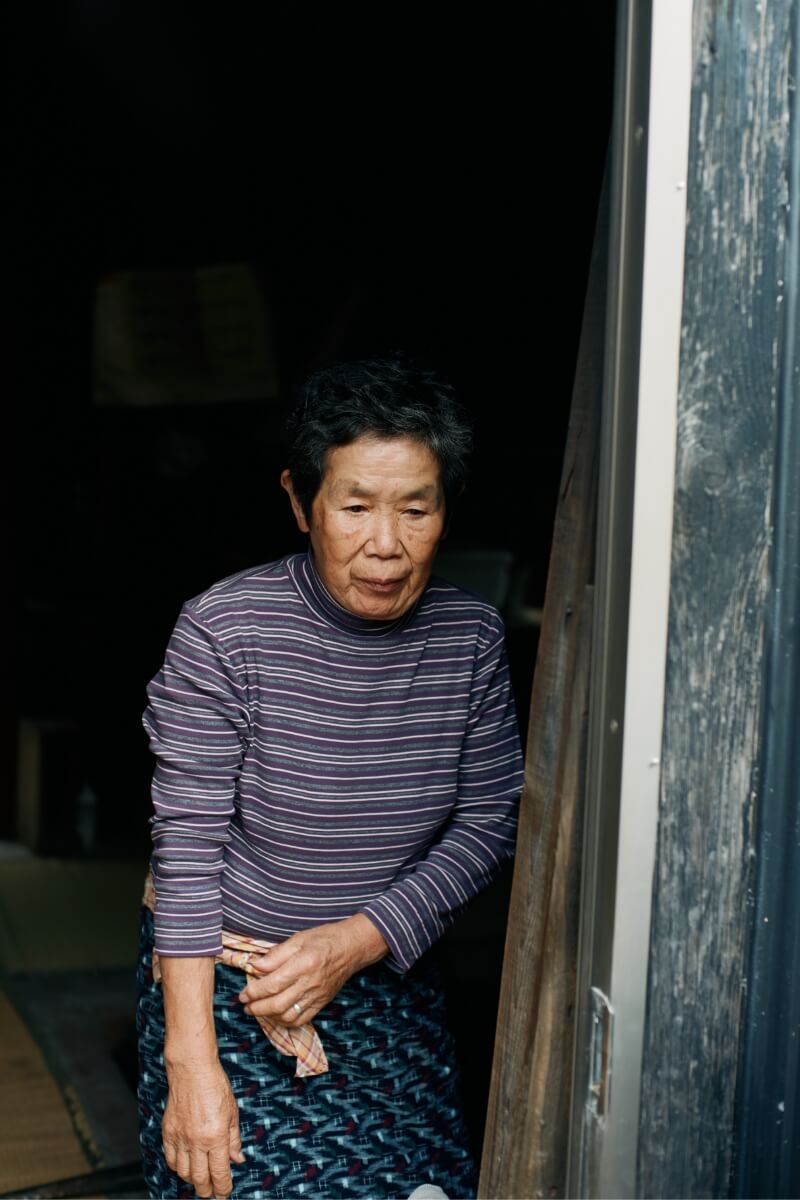
In this hut, the ama divers simply walk into the sea with little more than the clothes on their backs. Another method, funado, involves taking a boat to the fishing grounds as a group.
"Back in the day, we even had husband-and-wife boats in these parts," someone says. "My mother did that."
"When I was a kid," chimes in another, "we'd all shout and cheer while hauling the boats up onto land."
"They were wooden boats back then," a third adds. "You couldn't leave them in the water, or they'd rot."
A "husband-and-wife boat" was precisely that: the husband operated the vessel while the wife dived, tethered to the boat so he could pull her up in an emergency. With hand-rowed oars instead of engines, it was grueling work for both.
"None of those couples are around anymore," someone remarks with a mischievous grin. "They've all gone off to the Great Beyond!"
The crackle of the firewood accompanies this steady flow of banter. Although much of the conversation centers around fishing, the women also swap tips about homemade side dishes and other daily matters. It feels more like a high-spirited club room than a workplace.
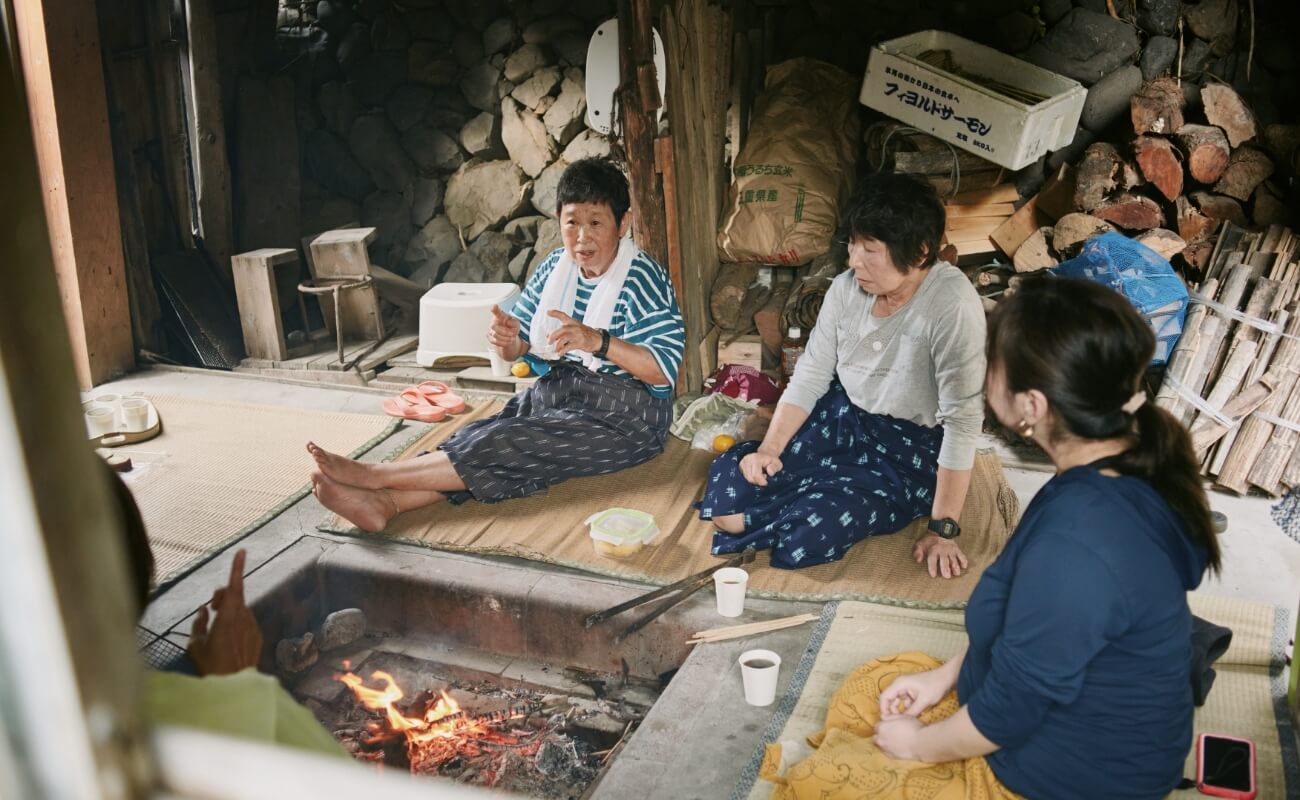
"Hide-bā was the best at cutting wakame."
"Oh, you mean how she pressed it with her elbow and sliced it cleanly?"
"I was so impressed watching that."
"Let's try it ourselves sometime."
We observed that skill matters enormously here, and they nodded in agreement.
"Oh, you've got ama ranging from the very bottom to the top," one said.
"Two people can dive in the same spot—one might make 1,000 yen, the other 100,000 yen."
"There's no business like it," another laughed.
"But that just means Aiko over there has a challenge worth pursuing, right?"
Apparently, Ms. Ono is a rising star in their ranks. They're more like friendly colleagues than senior and junior divers. Though the hearth's fire had long burned out, their tea-fueled conversation showed no sign of ending soon.
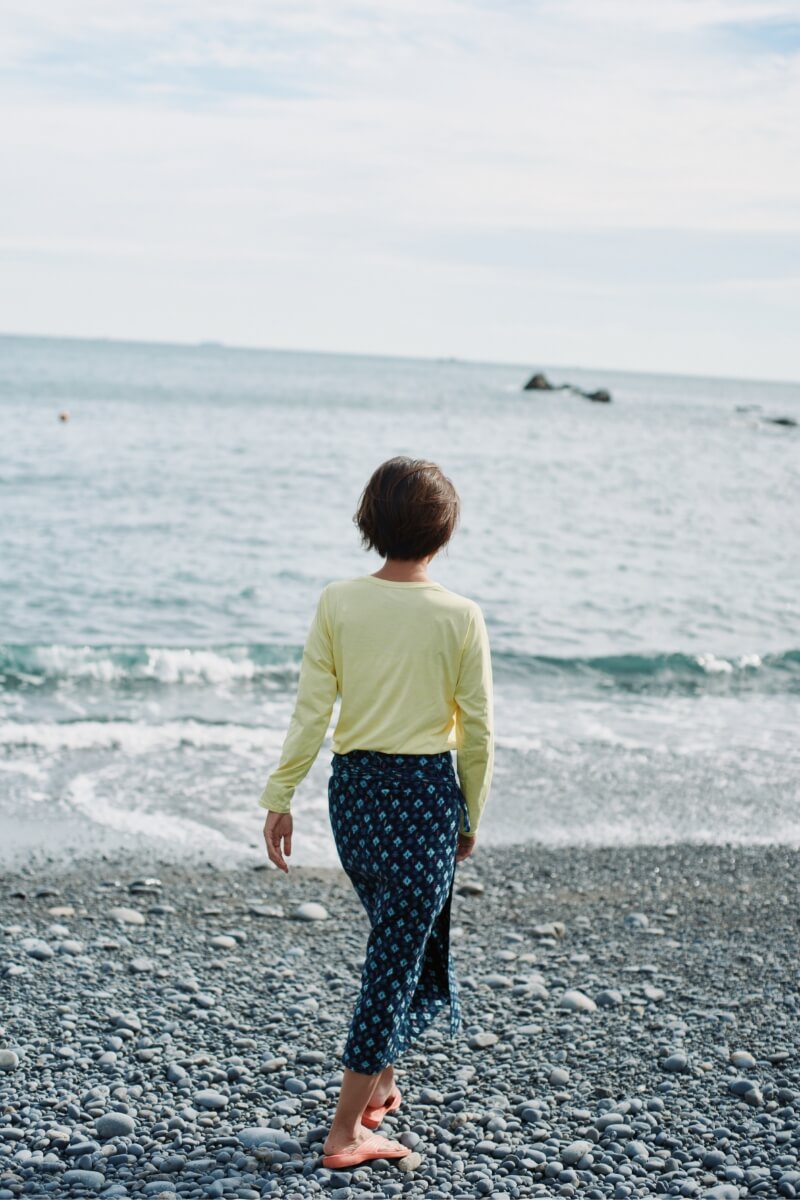
Walking with Ms. Ono to the shore—her workplace—she looked back at the hut and admitted she was glad she chose Ijika.
"Everyone here gets along so well. Gatherings around the kamado are a lot of fun. Our hut has a wide age range and includes people like me from outside the region, so there's a lot of diversity."
Initially, she never planned on becoming an ama. But while searching for a place to settle outside Tokyo, she came across Ijika's recruitment notice and felt compelled to try it.
"It was unheard of for an outsider to become an ama. I'm so grateful this hut welcomed me. I've often wondered why they've been so kind. I heard that once a house in the village burned down, everyone dived for abalone and sold them to rebuild it. That's the kind of place this is."
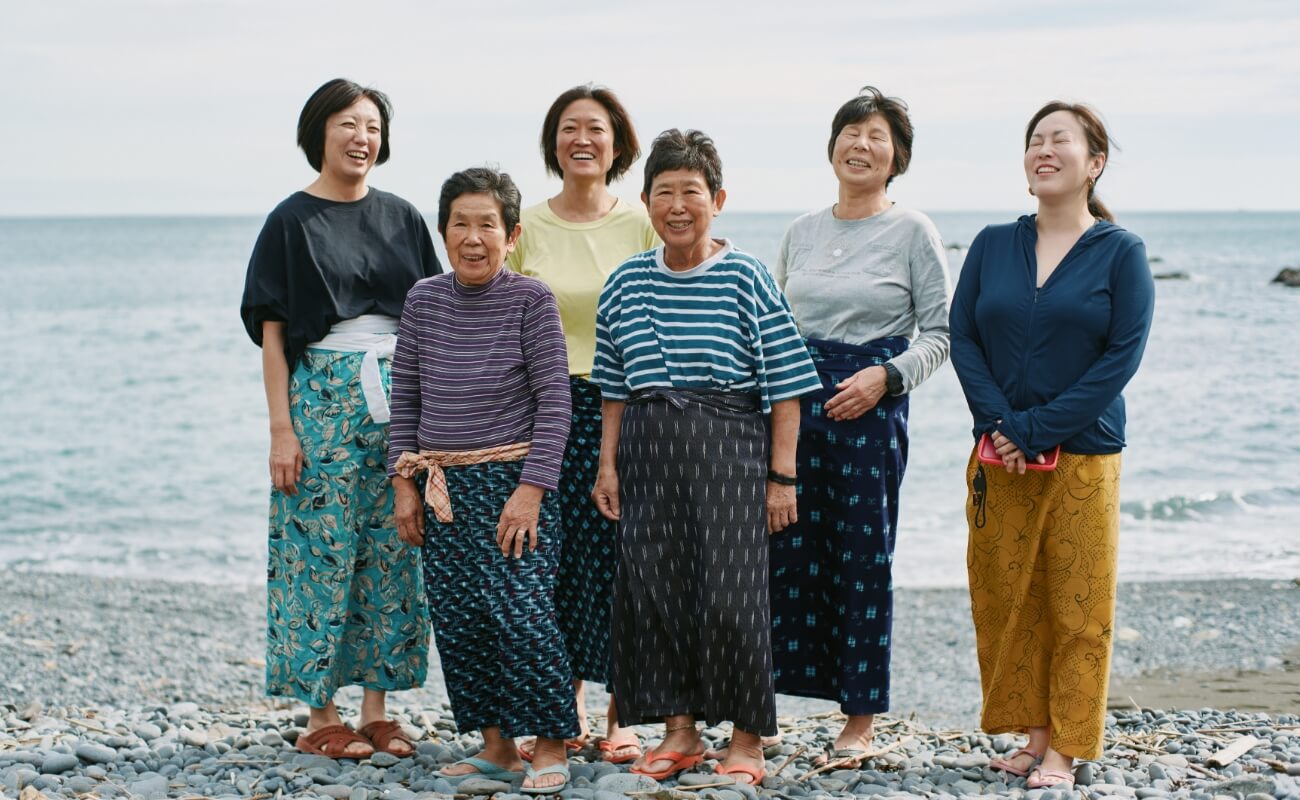
Weather permitting, the ama dives around 90 days a year—summer and winter combined—typically twice a day: 75 minutes in summer and 70 minutes in winter. It sounds like grueling work. We asked what she'd learned from this lifestyle.
"I learned not to push myself too hard. Nature is our partner, and there are things you just can't force."
Yet, from what I observed in the hut, there are still many things people can change—mainly through the power of community. As Ms. Ono's life shows, being welcomed into this circle can transform you.
"I've decided to devote myself fully to the ocean. Even if we run out of abalone here one day, I'll move on to helping them come back."
She says this with a smile that carries the relaxed strength of someone who has learned to go with the ocean's flow.
